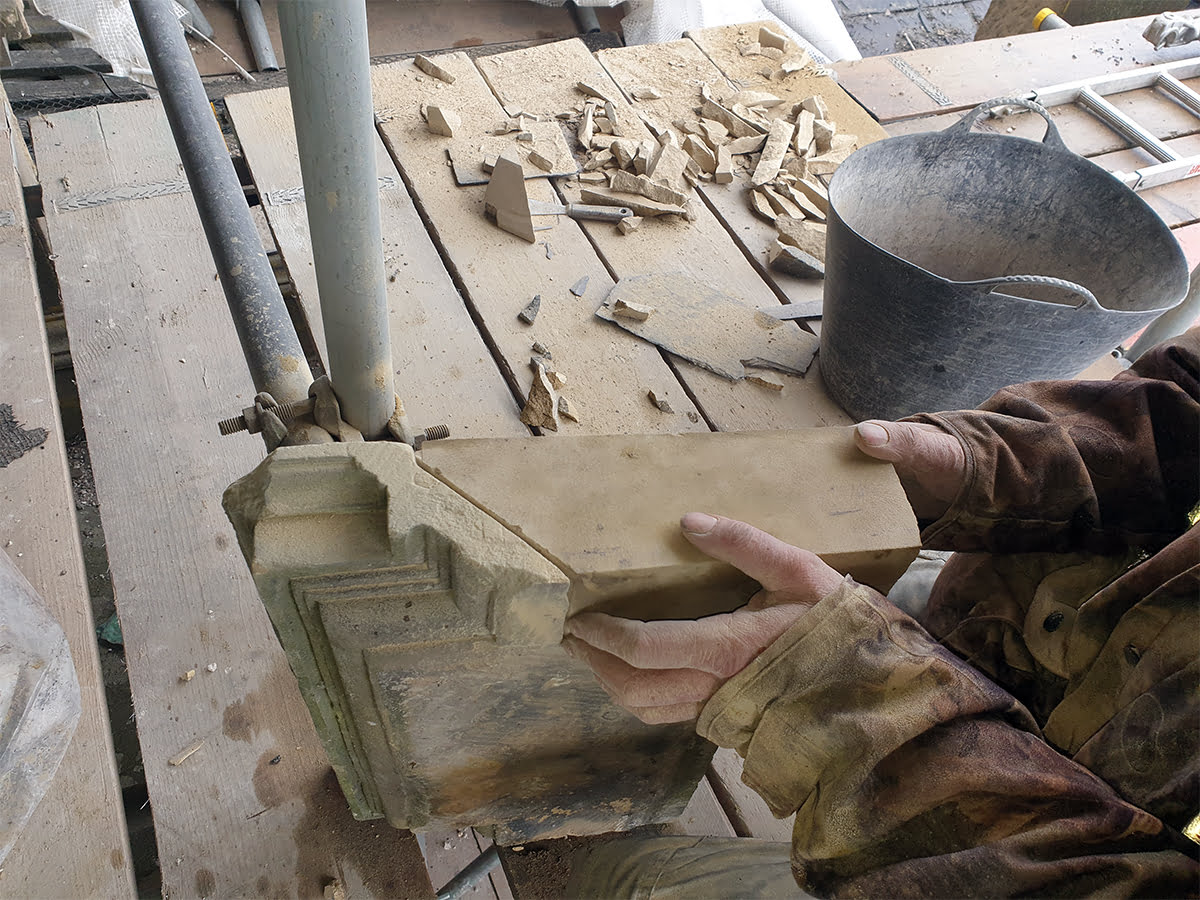Every historical building tells a story, etched into the particular very stones that make up their structure. Over period, however, these stones can suffer from wear and destruction, losing the beauty that once defined all of them. Stone restoration is usually not merely the repair process; that is an skill that combines ability, knowledge, and a new deep appreciation with regard to history. By knowing what stone restoration entails, homeowners and preservationists alike can ensure that these remarkable features are usually not only stored but also celebrated for generations in order to come.
In this thorough guide, we may explore the many facets of rock restoration, including typically the benefits associated with engaging specialized services versus taking on DIY projects. We will share tips and hints on maintaining and restoring various forms of natural stone surfaces, from marble and granite to be able to limestone and travertine. As we delve into common mistakes to avoid, essential cleaning approaches, and the significance of proper sealing, you'll much better prepared to make well informed decisions about preserving your stonework. Regardless of whether you're looking in order to restore a historic site or maintain the beauty of your home, this content will function as your own roadmap from splits to crafts.
Understanding Stone Restoration
Stone restoration will be a meticulous process aimed at fixing and revitalizing natural stone surfaces that have suffered from have on and tear more than time. This exercise not only enhances the aesthetic appeal of stone materials yet also extends their very own lifespan. Various aspects such as weather, usage, and servicing practices contribute in order to the deterioration regarding stone, leading to be able to issues like splits, stains, and erosion. Understanding the fundamentals regarding stone restoration helps homeowners and real estate managers preserve typically the beauty and honesty of their stone features.
A key aspect of stone restoration will be identifying the particular demands of the natural stone type involved. Various stones, such since marble, granite, limestone, and travertine, possess unique properties and vulnerabilities. Knowing just how to treat each kind correctly ensures efficient restoration. Professionals frequently utilize a combination of techniques, this sort of as cleaning, perfecting, sealing, and restoring chips or fractures, tailored to the material being renewed. This targeted technique not only rejuvenates the stone but additionally protects it through future damage.
Stone restoration also plays a substantial role in historic preservation. Many elderly buildings showcase beautiful stonework that tells a story about the architectural design of their time frame. Through careful restoration, these historic elements can be preserved without compromising their own original character. This specific blend of artistry plus technical skill underscores the importance of stone recovery both in residential plus commercial contexts, generating it a very important investment decision for maintaining typically the charm and efficiency of stone floors.
Specialized vs. DIY Restoration
Any time it comes to stone restoration, property owners often face typically the decision between getting a professional or going for a DIY approach. Specialist stone restoration companies offer expertise that comes from years of coaching and experience. Professionnals understand how to evaluate the condition of the stone, choose typically the appropriate materials, in addition to utilize techniques of which are not only effective but in addition safe for typically the particular form of natural stone being restored. This ensures that typically the restoration process keeps the integrity in addition to longevity of ancient materials.
On the various other hand, DIY recovery can be a new tempting means to fix those looking to reduce costs or enjoy a hands-on project. With the wealth of information available online, it is easy to undertake basic preservation and repairs on your own. However, without typically the proper knowledge and tools, individuals may well inadvertently cause additional damage or fall short to achieve sufficient results. Learning the limits of DIY work is crucial, for instance a projects can need advanced skills which might be best left to be able to professionals.

Ultimately, the option between professional and even DIY restoration is dependent on the opportunity of the project plus the homeowner's ease and comfort level with maintenance. For minor cleanup and maintenance, DO-IT-YOURSELF methods may be sufficient, but also for substantial restoration work, especially in historic stones, enlisting the aid of a professional is often the most effective course of motion. Careful consideration with the project's needs may help homeowners make the informed decision of which protects their expense in stone areas.
Maintenance and Care regarding Natural Stone
Proper maintenance and take care of natural stone surfaces are essential to keeping their beauty and longevity. Regular cleaning is the groundwork of this procedure. Employ a pH-balanced rock cleaner, as chemicals can damage typically the surface. For regular maintenance, comfortable fabric or sponge and warm water will often suffice. It's important to avoid abrasive scrubbers that can scratch the stone. Ensure spills are wiped up promptly in order to prevent staining, specifically on porous rocks like limestone in addition to travertine.
Sealing is yet another critical aspect of stone care. Most normal stone surfaces gain from a superior quality sealant that shields against moisture plus stains. Depending on https://stonerestoration.com of stone and the level of make use of, resealing should be done every six months to two years. To check if your natural stone needs resealing, carry out a simple drinking water test—if water drops up on the, the seal is beneficial; if it soaks in, it’s time to apply a new layer.
Finally, be mindful of the environment around stone surfaces. For outdoor stone, standard maintenance includes taking away debris, leaves, plus organic matter that can result in form and algae development. In addition, monitor for any cracks or damage of which may develop more than time, as early on intervention can avoid more extensive recovery work. By prioritizing these maintenance techniques, you can ensure your natural natural stone surfaces remain gorgeous and sturdy for many years to come.
